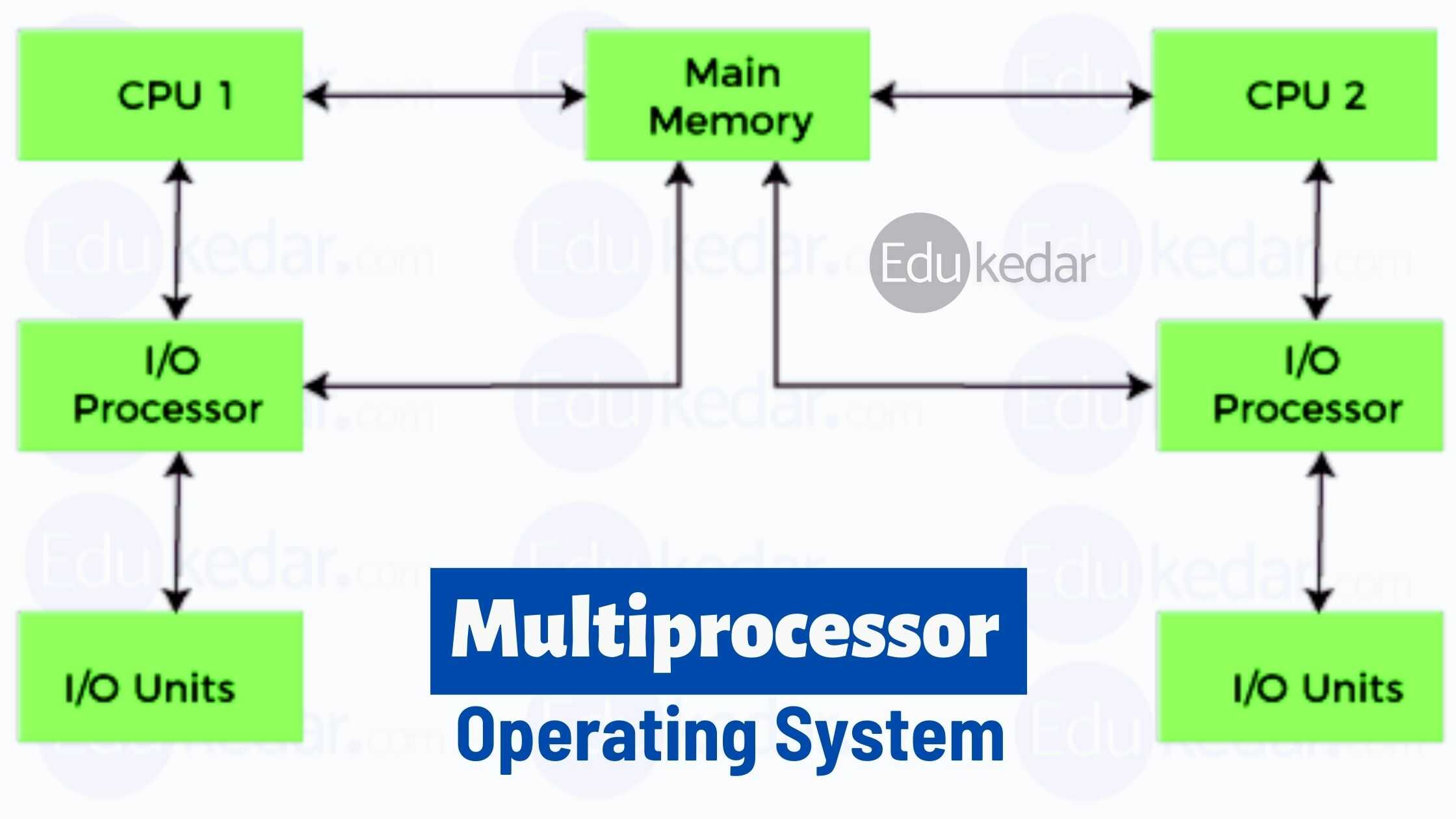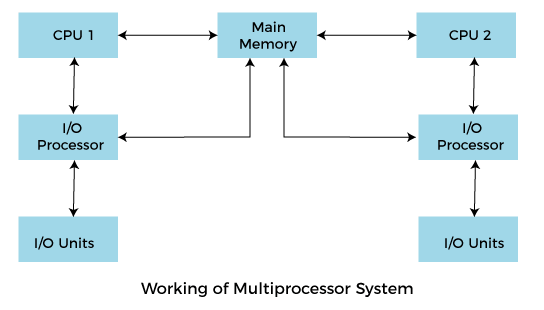Explain Different Types of Multiprocessor Operating Systems
Read More Real Time Operating System RTOS Tutorial The main use of an operating system is to ensure that the computer can be used and the user can do the exact same way that the command given by the user needs to be understood by the operating system that is in the computer or the device accordingly Can workThe ability of a single operating system. Types of multiprocessing Shared nothing MP The processors share nothing each has its own memory caches and disks but they are interconnected.

Multiprocessor Operating System Types Advantages And Limitations
Note that load balancing refers to a scheme where work is allocated to processors on a more permanent basis.

. The key objective of using a multiprocessor is to boost the systems execution speed with other objectives being fault tolerance. Here We will explain different types of multiprocessor operating system and classification of its list is done into six types. Parallel Systems Cont Symmetric multiprocessing SMP Each processor runs an identical copy of the operating system.
Multiprocessor operating systems includes Windows and Linux run on multiprocessors. There are mainly two types of multiprocessor systems. Symmetric multiprocessing SMP Asymmetric multiprocessing ASMP Symmetric Vs Asymmetric Multiprocessing.
Some computer processes are very lengthy and time-consuming. Multicore and multiprocessor systems both serve to accelerate the computing process. What are the 10 types of operating system.
A multicore system is ideal if you want to execute one program at the same time. Following are some of the most widely used types of Operating system. Types of Operating System OS Following are the popular types of OS Operating System.
Mainframe or minicomputer systems b. Each processor when idle selects a thread from this queue. There is an operator which takes similar jobs.
Multicore CPU consumes more electricity than a multiprocessor system because a. They are two different types applied for various environments. Shared Memory Cluster All of.
Shared disks MP The advantages of shared disks are that part of a familiar programming model is retained disk data is. Personal Computer Operating Systems The next category is the personal computer operating system. OS has to cater for protection of data.
This type of operating system powers up servers that can serve multiple users over a network and allow the user to share software and even hardware resources. A multiprocessor is a computer system with two or more central processing units CPUs with each one sharing the common main memory as well as the peripherals. Multicore systems are the ones in which multiple cores are built within one CPU.
In shared memory multiprocessors all the CPUs shares the common memory but in a distributed memory multiprocessor every CPU has its own private memory. Fields Asymmetric Multiprocessor Every processor is given seeded tasks in this operating system and the master processor has. Multiprocessor VS multicore-.
There are various organizations of multiprocessor operating system. Server operating systems are still high-end but a level lower than mainframe systems. Must Read What is Multiplexing.
A global queue of threads is maintained. Operating System can be viewed from two viewpoints User views System views 1. This type of operating system does not interact with the computer directly.
There are 10 types of operating system which are given below. Types of Operating Systems. What are the 5 types of operating system.
Time-Sharing Operating Systems. This helps in simultaneous processing of programs. The OS code is usually shared.
Batch Operating System. A multiprocessor is made up of several CPUs. A multicore contains multiple cores or processing units in a single CPU.
These systems are referred to as tightly coupled systems. If the user is using standalone system then OS is. Server Operating Systems.
While multiprocessor is ideal if you want to execute multiple processes at the same time. List what resources must be managed carefully in the following settings. Processes are not assigned to a particular processor.
User Views-The users view of the operating system depends on the type of useri. Each task is given some time to execute so that all the tasks work smoothly. Shared memory Multiprocessor As the name indicates each.
Memory and CPU resources storage network. Each CPU has its own OS. Many processes can run at once without performance deterioration.
Views of OS. Symmetric Multiprocessor In this system every processor owns a similar copy of the OS and they can make. Multiprocessor and Multicore System in Operating System.
There are two types of multiprocessors one is called shared memory multiprocessor and another is distributed memory multiprocessor. If you dont know what Operating system is you can learn from here. 5 types of operating system is given below.
Workstations connected to servers c. Explain the popular multiprocessor thread-scheduling strategies. 12 The issue of resource utilization shows up in different forms in different types of operating systems.
Read More Real Time Operating System RTOS Tutorial. A multicore processor does not need complex configurations like a multiprocessor. Most modern operating systems have SMP support.
In this types of the organization then there are much Central processing units in the system and each CPU has its own private operating system and memory is shared among all the processors and input-output system are also shared.

Multiprocessing Operating System Javatpoint
Multiprocessing Operating Systems Os Fields Of Study Abstract Principal Terms

Multiprocessor Systems What Is Multiprocessor Systems In Os In Hindi Youtube
No comments for "Explain Different Types of Multiprocessor Operating Systems"
Post a Comment